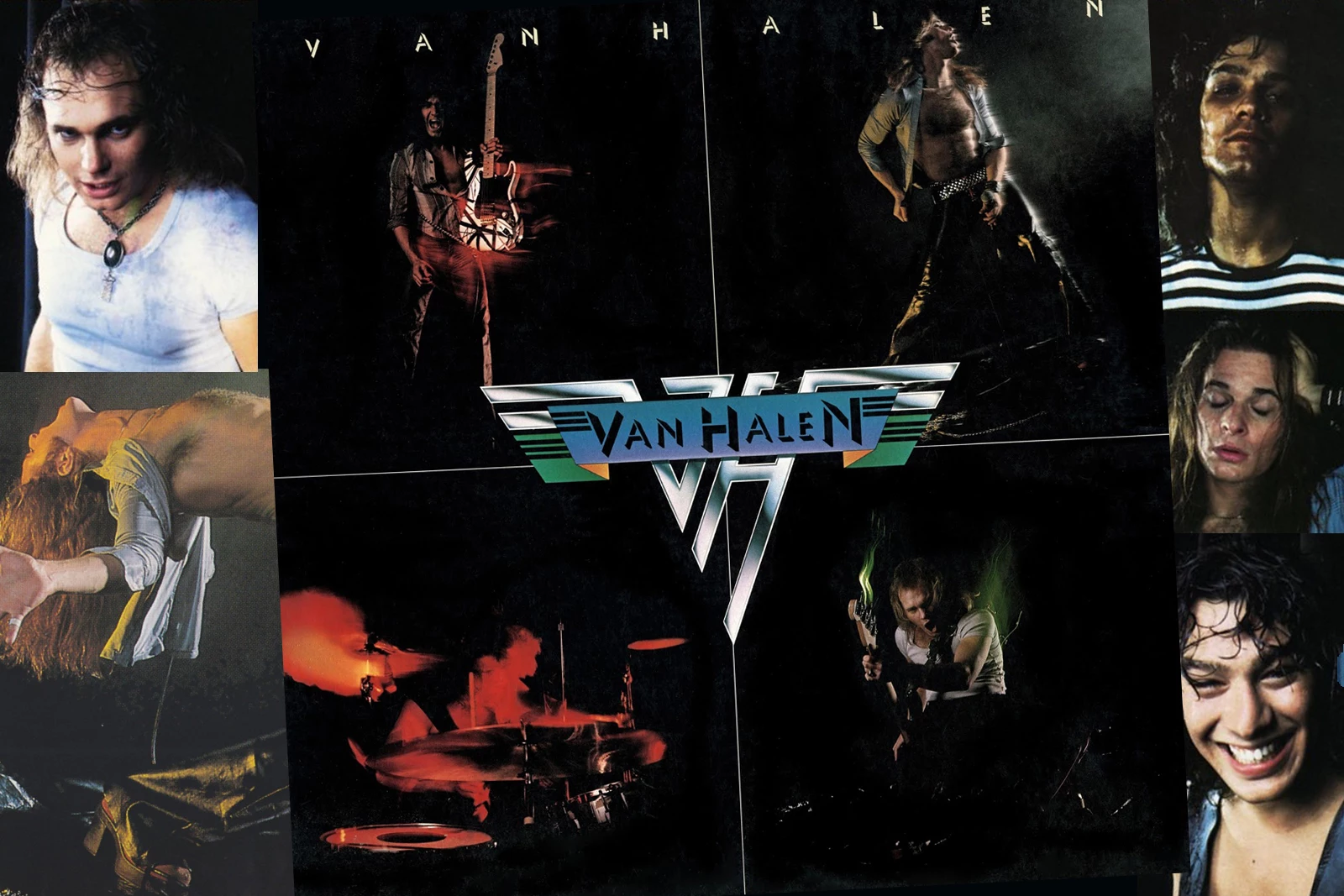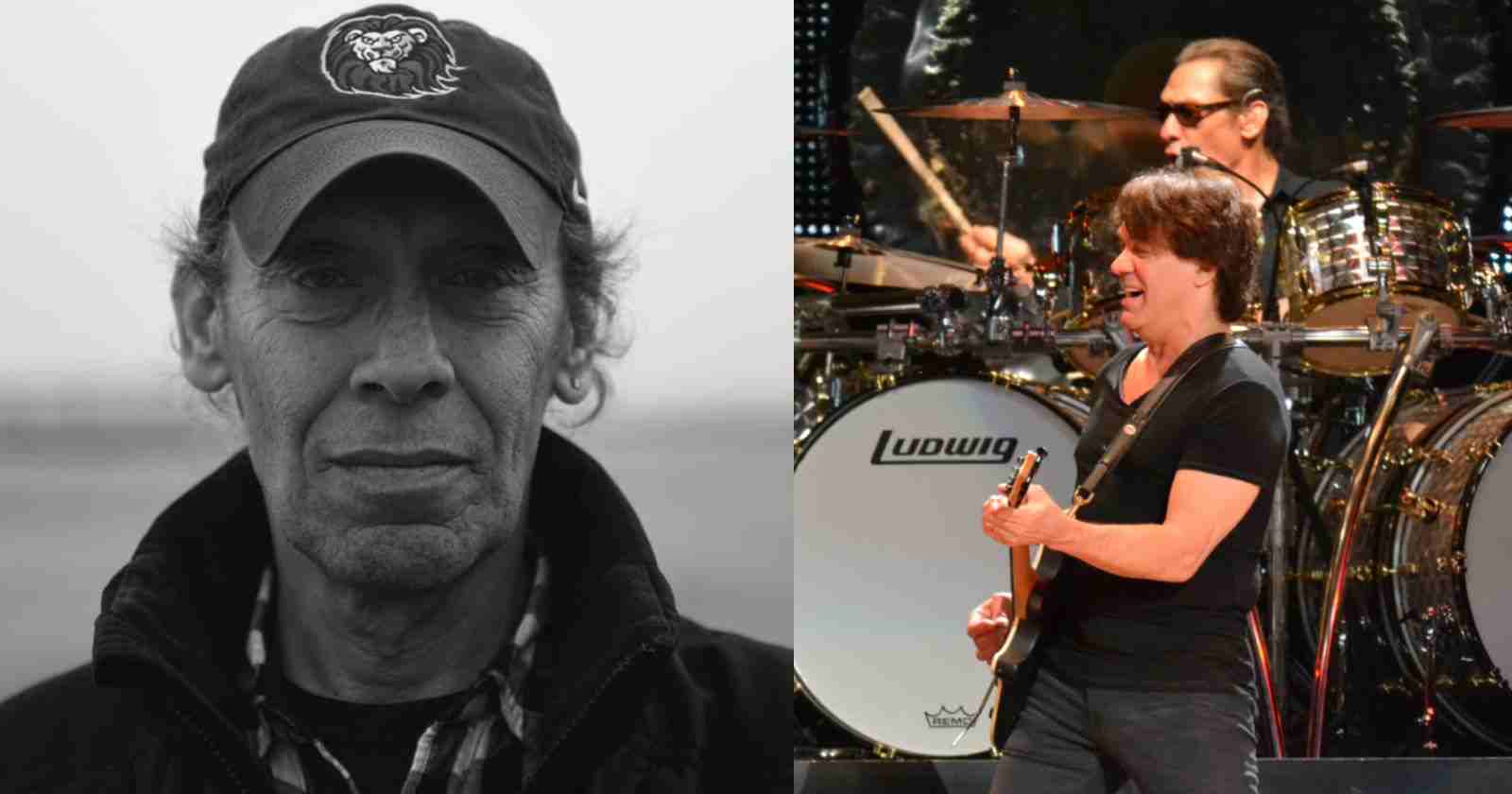Van Halen’s Legacy

Van Halen, a band that transcended generations and redefined rock music, left an indelible mark on the world. Their impact extends far beyond their chart-topping hits and sold-out stadiums, influencing countless musicians and shaping popular culture in profound ways.
Eddie Van Halen’s Guitar Innovations
Eddie Van Halen’s revolutionary guitar techniques fundamentally altered the landscape of hard rock and heavy metal. His innovative tapping, two-handed tapping, and dive bombing techniques pushed the boundaries of what was possible on the instrument, inspiring countless guitarists and revolutionizing the way the guitar was played. His signature “brown sound” tone, achieved through his unique combination of amplifiers and effects pedals, became a coveted sound for generations of guitarists. Eddie’s virtuosity and creativity made him a true icon, inspiring countless aspiring musicians to pick up the guitar and explore new sonic possibilities.
Van Halen’s Musical Evolution
Van Halen’s music evolved significantly over their career, showcasing their versatility and ability to adapt to changing musical trends. Their early albums, like “Van Halen” (1978) and “Women and Children First” (1980), featured a raw, energetic, and blues-infused hard rock sound. These albums established their signature sound, characterized by Eddie’s blistering guitar solos, David Lee Roth’s flamboyant stage presence, and the tight rhythm section of Michael Anthony and Alex Van Halen.
Later albums, such as “1984” (1984) and “5150” (1986), saw the band experiment with synthesizers, pop influences, and more polished production. While their core sound remained, these albums reflected the band’s willingness to embrace new sounds and explore different musical territories. This evolution showcased Van Halen’s ability to adapt and remain relevant in a constantly changing musical landscape.
Van Halen’s Cultural Impact
Van Halen’s influence extended far beyond music, leaving a lasting impact on popular culture. Their iconic stage presence, featuring David Lee Roth’s flamboyant costumes and energetic performances, became a defining element of 1980s rock and roll. Their music videos, particularly the groundbreaking “Jump” (1984), helped to solidify the band’s status as pop culture icons. The band’s fashion sense, characterized by leather jackets, ripped jeans, and colorful bandanas, became synonymous with the era’s rebellious and energetic spirit. Van Halen’s influence can be seen in the fashion, hairstyles, and youth culture of the 1980s, solidifying their place as one of the most influential bands of all time.
The Eddie Van Halen Phenomenon

Eddie Van Halen, the virtuoso guitarist of the legendary rock band Van Halen, transcended the boundaries of conventional guitar playing, leaving an indelible mark on the music world. His innovative techniques, lightning-fast shredding, and unparalleled stage presence captivated audiences worldwide, inspiring generations of guitarists.
Eddie Van Halen’s Unique Guitar Techniques
Eddie Van Halen’s innovative guitar techniques were a radical departure from traditional rock guitar playing. His two-handed tapping technique, where he used his right hand to tap on the fretboard while simultaneously plucking strings with his left hand, opened up a whole new world of sonic possibilities. This technique allowed him to create complex and intricate melodies and harmonies that were previously impossible to achieve with traditional fingerpicking.
“I never really thought of it as a technique. It was just something I did.” – Eddie Van Halen
Eddie Van Halen’s signature “dive bomb” technique, where he would use the whammy bar on his guitar to create dramatic drops in pitch, added another dimension to his playing. This technique was often used to create a sense of tension and release, and it became a hallmark of his signature sound.
Eddie Van Halen’s Most Influential Guitar Solos and Riffs
Eddie Van Halen’s guitar solos were legendary for their speed, virtuosity, and originality. His solo in the Van Halen song “Eruption,” which appeared on their debut album in 1978, is considered one of the most iconic and influential guitar solos of all time. This instrumental piece showcased his two-handed tapping technique, his innovative use of the whammy bar, and his unparalleled technical proficiency.
Other influential guitar solos include “Jump,” “Panama,” and “Hot for Teacher,” which all demonstrated Van Halen’s mastery of melody, rhythm, and harmonic structure. His riffs, such as the opening riff to “Runnin’ with the Devil” and the iconic “Ain’t Talkin’ ‘Bout Love,” were instantly recognizable and became anthems of the rock genre.
The Evolution of Eddie Van Halen’s Guitar Playing
Eddie Van Halen’s guitar playing evolved throughout his career, reflecting his experimentation with different genres and his continuous pursuit of musical innovation. In the early years of Van Halen, his playing was characterized by its raw energy, speed, and technical brilliance.
As his career progressed, he incorporated elements of blues, jazz, and even classical music into his playing. He became more experimental with his use of effects pedals and began to explore different tunings and scales.
Eddie Van Halen’s Guitar Gear and Technology
Eddie Van Halen was known for his innovative use of guitar gear and technology. He was a pioneer in the use of the Floyd Rose tremolo system, which allowed for greater stability and range of pitch bending. He also developed his own signature guitar, the “Frankenstein,” which combined elements from different guitars to create a unique instrument that reflected his individual style.
| Year | Guitar | Amplifier | Effects |
|---|---|---|---|
| 1978 | Gibson Les Paul | Marshall JCM 800 | Wah pedal, MXR Phase 90 |
| 1980 | Frankenstein | Peavey 5150 | MXR Flanger, Boss Digital Delay |
| 1984 | Charvel | Peavey 5150 | Ibanez Tube Screamer, DigiTech Whammy |
| 1991 | Ernie Ball Music Man | Mesa/Boogie Mark IIC+ | Line 6 DL4, Eventide H9 |
Van Halen’s Songwriting and Lyrical Themes

Van Halen’s music, a potent blend of hard rock, heavy metal, and pop sensibilities, is as captivating as it is complex. The band’s songwriting, a collaborative effort between Eddie Van Halen, David Lee Roth, and later Sammy Hagar, delves into a tapestry of themes that resonate with audiences across generations. From the exhilarating escapism of their early hits to the introspective reflections of their later work, Van Halen’s music offers a rich and multifaceted exploration of the human experience.
Lyrical Themes in Van Halen’s Music
Van Halen’s lyrics often explore universal themes of love, loss, rebellion, and escapism. Their early work, particularly during the David Lee Roth era, is characterized by a youthful exuberance, a celebration of freedom, and a penchant for outrageous and often humorous imagery. Songs like “Jump” and “Panama” capture the spirit of carefree abandon, while “Runnin’ with the Devil” and “Ain’t Talkin’ ‘Bout Love” showcase the band’s rebellious streak. Later, with Sammy Hagar at the helm, Van Halen’s music takes on a more mature and introspective tone. Songs like “Right Now” and “Dreams” delve into themes of love, loss, and the passage of time.
Van Halen’s Most Iconic Songs
Van Halen’s discography is a treasure trove of iconic anthems that have become staples of classic rock radio and have left an indelible mark on the music industry. Here are some of the band’s most significant songs and their lasting impact:
- “Jump” (1984): This synth-driven power ballad, a departure from Van Halen’s typical hard rock sound, became a massive hit, reaching number one on the Billboard Hot 100 chart. It showcased the band’s versatility and their ability to experiment with different musical styles while retaining their signature energy and intensity.
- “Panama” (1984): This high-octane rock anthem, featuring Eddie Van Halen’s signature guitar solo, is a quintessential example of Van Halen’s ability to create catchy, infectious hooks and electrifying guitar riffs. It became a live concert staple and a fan favorite, solidifying the band’s status as one of the most exciting live acts of their era.
- “Runnin’ with the Devil” (1978): This blues-infused rocker, with its iconic opening riff, is a quintessential Van Halen track, showcasing the band’s raw energy and Eddie Van Halen’s blistering guitar skills. It became an instant classic and remains a popular choice for rock radio stations worldwide.
- “Ain’t Talkin’ ‘Bout Love” (1978): This hard-rocking anthem, featuring David Lee Roth’s signature swagger and Eddie Van Halen’s blistering guitar solo, is another example of Van Halen’s ability to create infectious, instantly recognizable hooks. It cemented the band’s reputation as one of the most exciting and innovative rock bands of the late 1970s.
- “Hot for Teacher” (1984): This raucous rocker, with its suggestive lyrics and Eddie Van Halen’s iconic guitar solo, is a classic example of Van Halen’s playful and provocative side. It became a popular choice for rock radio stations and a live concert staple, further solidifying the band’s status as one of the most exciting and entertaining live acts of their era.
David Lee Roth and Sammy Hagar: A Comparison of Songwriting Styles
David Lee Roth and Sammy Hagar, the two iconic lead singers of Van Halen, brought distinct approaches to songwriting and musical arrangements.
- David Lee Roth, known for his flamboyant stage presence and charismatic personality, brought a playful, often irreverent approach to Van Halen’s lyrics. His lyrics, frequently infused with humor and double entendres, often focused on themes of freedom, rebellion, and escapism. Musically, Roth’s era was characterized by a raw, energetic sound, with a focus on powerful riffs, driving rhythms, and Eddie Van Halen’s signature guitar solos.
- Sammy Hagar, a seasoned rocker with a powerful voice and a penchant for bluesy rock, brought a more mature and introspective approach to Van Halen’s music. His lyrics often explored themes of love, loss, and the passage of time, reflecting his own personal experiences and evolving perspective. Musically, Hagar’s era saw Van Halen explore a wider range of musical styles, incorporating elements of blues, hard rock, and even pop into their sound.
Van Halen’s Most Influential Albums
Van Halen’s albums have had a profound impact on the music industry, influencing generations of musicians and shaping the sound of rock music. Here is a timeline showcasing some of the band’s most influential albums:
| Year | Album | Impact |
|---|---|---|
| 1978 | Van Halen | This self-titled debut album introduced the world to Van Halen’s explosive energy, Eddie Van Halen’s innovative guitar playing, and David Lee Roth’s charismatic stage presence. It spawned several hit singles, including “Runnin’ with the Devil” and “Ain’t Talkin’ ‘Bout Love,” and cemented the band’s reputation as one of the most exciting and innovative rock bands of the late 1970s. |
| 1984 | 1984 | This album marked a turning point in Van Halen’s career, with the band experimenting with a more synth-driven sound and exploring new musical territories. It spawned several hit singles, including “Jump,” “Panama,” and “Hot for Teacher,” and became one of the best-selling albums of the 1980s. |
| 1986 | 5150 | This album, featuring Sammy Hagar as the new lead singer, showcased a more mature and introspective side to Van Halen, with Hagar’s bluesy vocals and powerful songwriting adding a new dimension to the band’s sound. It spawned several hit singles, including “Why Can’t This Be Love,” “Dreams,” and “Summer Nights,” and cemented the band’s status as a major force in the rock music world. |
Van Halen, those rock legends, always had a bit of a wild side, right? It’s a bit like the way Joe Rogan, with his podcast empire, has raked in a pretty impressive fortune – you can check out his joe rogan net worth if you’re curious.
Anyway, back to Van Halen – they were all about the showmanship, and that’s definitely something they had in common with Rogan, wouldn’t you say?
Van Halen, those rock legends, always had a wild side, a bit like the main character in the zookeeper movie. Both had a knack for making a splash, captivating audiences with their raw energy and unpredictable antics. While the movie explores a different kind of wildness, Van Halen’s music still resonates with that primal, untamed spirit.
